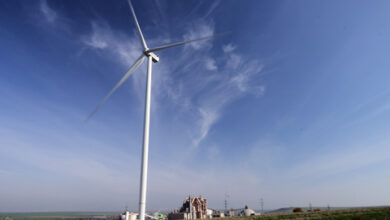Stryker Launches InSpace, a First-of-Its-Kind Biodegradable Subacromial Balloon Implant, in India

The InSpace balloon implant is designed to restore the subacromial space without requiring sutures or fixation devices and has been demonstrated to improve shoulder motion and function.
“InSpace is a groundbreaking, first-of-its-kind technology, offering a new, minimally invasive surgical option for surgeons, addressing their unmet needs in MIRCT and potentially providing early functional recovery and pain relief for patients,” said Aman Rishi, Vice President and General Manager for Stryker in India. “We are committed to the advancement of shoulder arthroscopy and leading the way in the shoulder continuum of care.”
The InSpace balloon implant has a long successful clinical history of over 14 years, 35 peer-reviewed clinical articles, and 41,000 balloons implanted across the globe.4
Some of the clinically proven advantages of InSpace are:
- Less invasive, streamlined surgical solution for MIRCTs compared to other surgical treatment options that require fixation devices or grafts.5
- Early, clinically meaningful improvement in shoulder motion and function.5
- On an average, patients showed an increase in range of motion compared to partial repair patients following surgery.
- Demonstrated comparable long-term safety and effectiveness results (compared to partial repair) out to two years.
- Patients demonstrated a high likelihood of clinical success, greater than 87% at two years, in subjects 65 and over.
*The InSpace subacromial tissue spacer system is indicated for the treatment of patients with massive, irreparable full-thickness torn rotator cuff tendons due to trauma or degradation with mild to moderate gleno-humeral osteoarthritis in patients greater than or equal to 65 years of age whose clinical conditions would benefit from treatment with a shorter surgical time compared to partial rotator cuff repair.
References:
- Novi M, et al. Irreparable rotator cuff tears: challenges and solutions. Orthop Res Rev. 2018; 10:93-103.
- Yamamoto A, et al. Prevalence and risk factors of a rotator cuff tear in the general population. J Shoulder Elbow Surg. 2010; 19(1):116-120.
- Minagawa H, et al. Prevalence of symptomatic and asymptomatic rotator cuff tears in the general population: From mass-screening in one village. J Orthop. 2013; 10(1):8-12.
- Stryker. Data on file.
- Verma N, Srikumaran U, Roden CM, Rogusky EJ, Lapner P, Neill H, Abboud JA. (2022). InSpace implant compared with partial repair for treatment of full-thickness massive rotator cuff tears. J Bone Joint Surg Am. Advance online publication. doi. 10.2106/JBJS.21.00667


